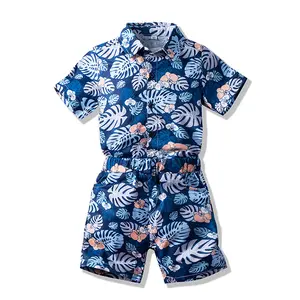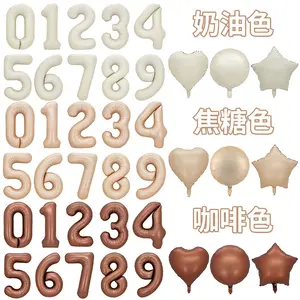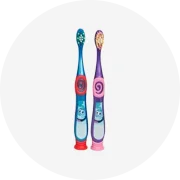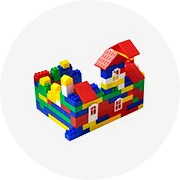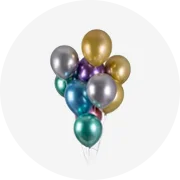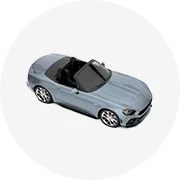Populair in uw branche






Gratis Monster Hersluitbare 1Kg 500G 250G Mat Platte Bodem Zwarte Plastic Aluminiumfolie Verpakking Koffie Zak Met klep En Rits
€ 0,0188 - € 0,0938
Min. bestelling: 2000 stukken







Koffiebonenverpakkingstas 12Oz 340G Bolsa De Cafe 250G 1Kg Koffiezakken Met Platte Bodem Met Klep En Rits
€ 0,0188 - € 0,0563
Min. bestelling: 500 stukken



Aangepaste 500Pcs 1000Pcs Lage Moq Ritssluiting Slot Voedsel Koffieverpakking Custom Stand-Up Digitale Printzak
€ 0,0094 - € 0,0657
Min. bestelling: 500 stukken
Verzending per stuk: € 1,13


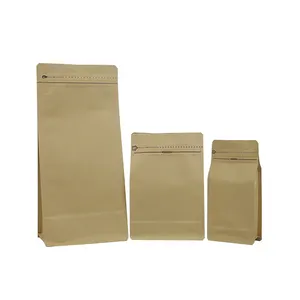
Groothandel Platte Bodem Bolsa Para 1 Pond Zijspaan Verpakking Koffietassen Met Klep En Ritssluiting
Klaar voor verzending
€ 0,1407
Min. bestelling: 100 stukken
Verzending per stuk: € 0,3563



Gelamineerd Materiaal Opstaan Voedsel Plastic Zak Met Eigen Logo Opstaan Met Rits Koffiezak Digitale Druktas
€ 0,0094 - € 0,0563
Min. bestelling: 200 stukken
Verzending per stuk: € 1,13

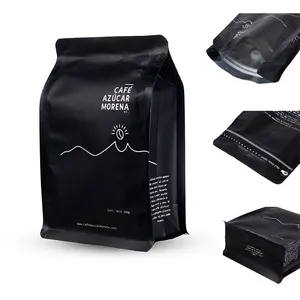




Groothandel Bolsa De Cafe 250G 12Oz Op Maat Bedrukt Logo Plastic Platte Bodem Koffietassen Verpakking Met Klep En Rits
€ 0,0188 - € 0,0563
Min. bestelling: 1000 stukken
Verzending per stuk: € 4,54






Bio Pla Biologisch Afbreekbare Zwarte Koffiezakken Met Klep En Rits Op Maat Gemaakte Papieren Verpakking Koffiebonenzak Met Platte Bodem 250gr 250G
€ 0,0094 - € 0,0563
Min. bestelling: 1000 stukken
- 11%






Eco Vriendelijke Pouch Rits Custom Gedrukt Zak Verpakking Composteerbaar Papier Biologisch Afbreekbaar Kraft Verpakking Bean Koffie Zakken Met Klep
Klaar voor verzending
€ 0,0469 - € 0,0844
Min. bestelling: 1000 stukken
Verzending per stuk: € 0,0469


Op Maat Gemaakte 250G Café Lege Koffiebonen Theeverpakking Zakje Platte Doos Bodem Koffiezak Met Klep En Ritssluiting
€ 0,0094 - € 0,1407
Min. bestelling: 500 stukken
Verzending per stuk: € 1,13



125G 500G 1Kg 250G Aangepaste Acht Zijafdichting Platte Bodem Koffieboon Aluminiumfolie Koffieverpakkingstassen Met Klep En Ritssluiting
€ 0,0094 - € 0,0469
Min. bestelling: 500 stukken






Koffie Zak Met Klep En Rits Bean Factory Bedrukte Platte Bodem 250G 1Kg Composteerbaar Biologisch Afbreekbaar Koffie Zak custom
€ 0,0938 - € 0,2813
Min. bestelling: 500 stukken

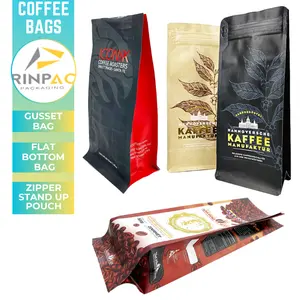


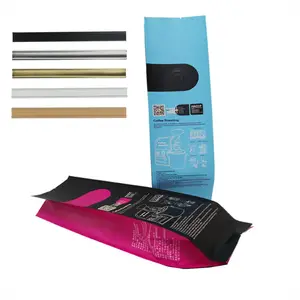

Hersluitbare De Cafe 250G 12 Oz 5lb Custom Gedrukt Logo Plastic 12 Oz Platte Bodem Koffiezakken Verpakking Met Klep En Rits
€ 0,0094 - € 0,0563
Min. bestelling: 1000 stukken
Gerelateerde zoekopdrachten:
de zak van de koffie van de koffievervaardiging van koffiezakde zak van de koffie van de koffie1kg koffiezak2kg koffiezak10kg koffiezak50g koffietaskoffiezak van de verpakking van de koffieklaar koffiezakdriehoek koffietasvietnam koffiezakjamaican koffietasgebruikte koffiezakbovenste koffiezakhoudbaarheid koffietas


Custom Gedrukt Recyclebaar Logo 340G Zwarte Koffie Verpakking Zak Stand Up Platte Bodem Doypack Mylar Koffie Zak Met Klep
€ 0,0375 - € 0,075
Min. bestelling: 5000 stukken
Verzending per stuk: € 4,70






Op Maat Bedrukte Zwarte Aluminiumfolie 100G 250G 500G 1Kg 12 Oz Plastic Koffiezakken Met Platte Bodem En Klep
€ 0,0938 - € 0,1594
Min. bestelling: 100 stukken
Verzending per stuk: € 1,56






Aangepaste 100G 150G 250G 500G 1Kg Pla Biologisch Afbreekbaar Zijvouw Platte Bodem Bonen Verpakking Composteerbare Koffiezak Met Klep
€ 0,0094 - € 0,2813
Min. bestelling: 500 stukken



Custom Gedrukt Mat Zwart Aluminium Folie 100G 250G 500G 1Kg 12 Oz Plastic Platte Bodem Koffie zak Met Klep
€ 0,0282 - € 0,2813
Min. bestelling: 500 stukken


250G 500G 1Kg Koffiezakje Op Maat Gemaakte Lege Koffiezakjes Op Maat Bedrukt Koffiebonen Verpakkingstassen
€ 0,0094 - € 0,0844
Min. bestelling: 100 stukken


Op Maat Bedrukte Koffiebonenverpakking Recyclebaar Vierkant Bodemdoosje 200G 500G 1Kg Koffiezak 5lb
€ 0,0094 - € 0,0375
Min. bestelling: 2000 stukken






Custom Pla Biologisch Afbreekbaar Zijvlakke Bodem Bonen Verpakking 100G 150 G 250G 500G 1Kg Koffiezak Met Klep En Rits
€ 0,0375 - € 0,0938
Min. bestelling: 1000 stukken


Op Maat Bedrukte Dooszak Biologisch Afbreekbare Aluminiumfolie Koffiezak 250G Ritszak Met Platte Bodem En Rits Geurbestendig Voedselverpakking
€ 0,0282 - € 0,1875
Min. bestelling: 500 stukken
Verzending per stuk: € 3,80






Op Maat Gemaakte Groothandel Hersluitbare Platte Onderkant Gusset Stand-Up Koffie Rits Zakje Verpakking Met Klep En Tin Stropdas
€ 0,0282 - € 0,9374
Min. bestelling: 500 stukken






Minfly Digital Printing Custom Plastic 250G 500G 1Kg Stand Up En Rits Slot Koffie Bean Bag Met klep En Helder Venster
€ 0,0094 - € 0,0469
Min. bestelling: 500 stukken






Op Maat Bedrukt 100G 250G 500G 1 Kg Zwarte Koffiezakjes Eco Gebrande Koffie En Theezakje Met Klep Hersluitbaar Opstaand Mylar Zakje
€ 0,0094 - € 0,0282
Min. bestelling: 2 stukken


Gepersonaliseerde Hersluitbare Stand Up Koffie Verpakking 100gr 100G 150 G 250G 500G 1Kg Biologisch Afbreekbaar Custom Koffie tassen
€ 0,0094 - € 0,0375
Min. bestelling: 5000 stukken


Eco Vriendelijke Bolsa Verpakking Zijvouw 250G 500G 1LB Klep Zakjes Recyclebaar Custom Print Bean Koffie Zakken
€ 0,0188 - € 0,0469
Min. bestelling: 10000 stukken






Biologisch Afbreekbaar 250G 500 1Kg Koffiezakje Met Platte Bodem Op Maat Bedrukte Zwarte Koffiezakken Met Klep Met Ritssluiting Koffiebonenverpakking
€ 0,0094 - € 0,0469
Min. bestelling: 1000 stukken






Eco 500G Pouch Zipper Bag Vlakke Bodem Papier Biologisch Afbreekbaar Kraft Verpakking Custom Gedrukt Bean Koffie Zakken Met Klep
Klaar voor verzending
€ 0,0094 - € 0,0938
Min. bestelling: 5000 stukken
Verzending per stuk: € 0,0282


Aanpassen Gedrukt Logo Hersluitbare Clear Stand Up Coffee Pouch Tassen Met Venster Voor Koffie Verpakking
€ 0,0938 - € 0,1875
Min. bestelling: 500 stukken
Verzending per stuk: € 6,39


Custom Gedrukt 8Oz 12Oz 16Oz 5lb 100G 250G 500G 1Kg Recyclebaar Composteerbaar Koffie zakken Platte Bodem Koffie Verpakking Met Klep
€ 0,0094 - € 0,1875
Min. bestelling: 1000 zakken


Op Maat Bedrukte Matzwarte Koffiebonen Verpakking Zijkanten Koffiezakken Met Klep
€ 0,0844 - € 0,225
Min. bestelling: 1000 stukken
Verzending per stuk: € 7,69


Op Maat Bedrukt Composteerbaar Opstaand Zakje Platte Bodem Premium Kraftpapier Koffiezakken Met Klep En Ritssluiting
€ 0,0188 - € 0,075
Min. bestelling: 1000 stukken




Custom Afdrukken Platte Bodem 250G 1Kg Koffieboon Verpakking Zak Met Terugslagklep
€ 0,075 - € 0,4219
Min. bestelling: 500 stukken






Custom 250G 500G 1Kg Bolsa Para Cafe Platte Bodem Aluminiumfolie Koffiebonenzak Verpakking Koffie Tassen Met Klep En Rits
€ 0,0282 - € 0,075
Min. bestelling: 10000 stukken






Custom Speciale Brede Vormige Koffiebonen Verpakking Aluminium Matte White 100G Koffie Zakje Met Klep En Side rits
Klaar voor verzending
€ 0,1875 - € 0,2156
Min. bestelling: 100 stukken
Verzending per stuk: € 5,60






Matt Zwarte Platte Bodem Koffie Zakken Met Klep Custom Gedrukt Verpakking Groothandel Tassen X
€ 0,0094 - € 0,0375
Min. bestelling: 500 stukken






Custom Afdrukken Aluminiumfolie Gevoerd 125G 250G 500G 1Kg Zip Lock Platte Bodem Koffie Zakken Met valve
€ 0,2813 - € 0,4687
Min. bestelling: 10 stukken






Biologisch Afbreekbare Hersluitbare Koffiezakken Met Ventiel Op Maat Gemaakte Papieren Verpakking 250gr 250G Koffiezak Met Platte Bodem Met Klep En Rits
€ 0,0094 - € 0,0563
Min. bestelling: 1000 stukken
Verzending per stuk: € 0,1688






Op Maat Bedrukt Merk Matte 250G 1Kg Platte Bodem Koffiezakken Met Klep En Rits Koffiebonen Verpakkingstassen
€ 0,0188 - € 0,1688
Min. bestelling: 2 stukken
Verzending per stuk: € 3,00






Custom Pla Biologisch Afbreekbare Aluminiumfolie 125G 250G 500G 1Kg Verpakking Platte Bodem Plastic Koffiebonenzakken Met Klep En Rits
€ 0,0469 - € 0,1125
Min. bestelling: 500 stukken
Topcategorieën
Over aangepaste koffie zak van de koffie
Alibaba.com levert 16155 aangepaste koffie zak van de koffie-producten. Een brede verscheidenheid aan aangepaste koffie zak van de koffie-opties zijn voor u beschikbaar, zoals koffie, snack en thee. Ook kunt u kiezen uit huisdier, pe en folie aangepaste koffie zak van de koffie. En uit voedsel, verpakking en pakket aangepaste koffie zak van de koffie.En of aangepaste koffie zak van de koffie andere , stand up pouch of zak met klep is.



